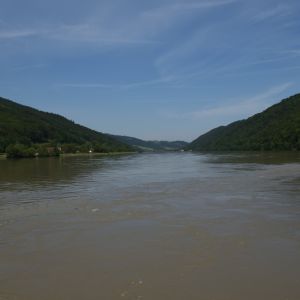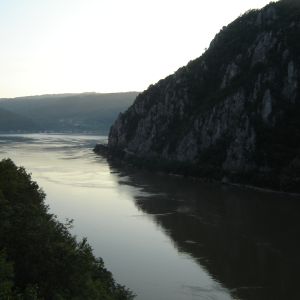Water Quality in the Danube under Scrutiny in the Most Extensive Monitoring to Date

The Danube river is second in length to the Volga in Europe and flows through numerous settlements, including four major capital cities of European countries. With a course length of 2,811 km and a watershed area of 801,463 km² (covering almost 8% of Europe's surface area), the Danube river water is extensively utilized as a source of drinking water for local populations. However, due to intensive industrial and agricultural activities within its watershed, a significant amount of waste substances is also discharged into the river.
The aim of a recently published international study involving various institutions, including the Faculty of Fisheries and Protection of Waters of the University of South Bohemia in České Budějovice, was to propose methods for long-term sampling using passive samplers to characterize the chemical pollution of the Danube's surface water and the associated risks for aquatic organisms and human health. This research was part of an extensive surface water monitoring effort called the Joint Danube Survey, conducted every six years at well-defined sampling points. This study offers a unique perspective on Danube river pollution through an innovative approach—long-term sampling using passive samplers, which continuously collected water samples from the Danube for three months. This method allowed for the detection of extremely low concentrations of pollutants in the water that could have gone unnoticed with conventional sampling methods. A total of 747 chemicals were analyzed (primarily pesticides, pharmaceuticals, and industrial substances), and seven different biological tests were conducted.
In the Danube, hundreds of chemicals were detected, and 21 chemical substances exceeded derived risk quotients or established environmental quality standards. These substances should receive increased attention in the future. The biological tests revealed various levels of hormonal and other biological activities. Some of these activities exceeded limit values (anti-androgenic and estrogenic activity), indicating a higher likelihood of water quality deterioration at those locations. For two types of activities (estrogenic and dioxin activity), most of the responsible chemical substances were identified. These combined insights provide the most comprehensive understanding of Danube pollution to date, and this new method could be used for future water quality monitoring in the Danube and other watercourses. The results will serve as a basis for planning measures to ensure water quality in the Danube, such as the implementation of new wastewater treatment technologies or the restriction of certain harmful chemical substances or materials containing them.
This research is financially supported by the Grant Agency of the Czech Republic (20-04676X). The findings obtained during the conducted research have been summarized in this publication: Šauer, P., Vrana, B., Escher, B.I., Grabic, R., Toušová, Z., Krauss, M., von der Ohe, P.C., König, M., Grabicová, K., Mikušová, P., Prokeš, R., Sobotka, J., Fialová, P., Novák, J., Brack, W., Hilscherová, K., 2023. Bioanalytical and chemical characterization of organic micropollutant mixtures in long-term exposed passive samplers from the Joint Danube Survey 4: Setting a baseline for water quality monitoring. Environment International 178: 107957. https://doi.org/10.1016/j.envint.2023.107957
Authors: Pavel Šauer and Branislav Vrana


